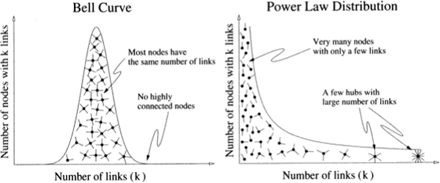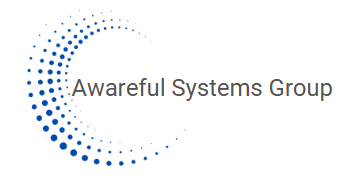Remote Work Revolution: Leveraging the Power of Self-Organized Criticality for Business Success
Self-organized criticality (SOC). A critical point in the life of a system where it suddenly self-organizes into a new structure. An illustrative example is where a sand pile suddenly avalanches and becomes a distribution of smaller piles of various sizes.
Glossary of Nonlinear Terms – referenced at Terms and Definitions
I have asked myself repeatedly over the past several months, “Have we finally reached a “critical point” or “phase transition” in the shifting relationship between remote work and the complex economic interdependencies of business and organizational systems to trigger deep ecosystem wide self-organized criticality?”
This question is increasingly relevant as business planning and budget cycles begin. The remote work revolution, accelerated by the COVID-19 pandemic, has become a powerful catalyst for economic transformations. The shift to remote work has unleashed self-organized criticality in the business landscape. It enables flexibility, enhances productivity, expands access to talent, and drives cost savings. However, it also brings forth challenges such as redefining organizational structures, communication dynamics, and preserving a sense of shared purpose and culture.
Understanding Self-Organized Criticality
Self-organized criticality refers to a critical point where a system self-organizes into a new structure, comparable to the redistribution of a sand pile during an avalanche. In the economic realm, SOC plays a crucial role in driving complexity and innovation.
Let’s look at the basic concepts of SOC and the related Power Law or Pareto principle as a construct to understanding the correlation between remote work, the impact of SOC events in business strategy and the broader economy.
The theory of self-organized criticality was originally introduced by Per Bak, Chao Tang and Kurt Wiesenfeld in a paper published in 1987 in Physical Review Letters, and is considered to be one of the mechanisms by which complexity arises in nature, economics, and social systems. (Wikipedia )
Vilfredo Pareto , revolutionzed economics with the development of the Pareto principle (Power Law) as a model of probability distribution. A power law implies that small occurrences are extremely common, whereas large instances are extremely rare. A familiar interpretation of the Pareto principle is the 80/20 rule which states that roughly 80% of the effects come from 20% of the causes.

(Image courtesy of Albert-Laszlo Barabasi, “Linked: The New Science of Networks”)
Think of the individual grains of sand building up until the structure of the sand pile simply cannot hold together. The power law curve illustrates that small(individual) actions may not directly change a system but they can and will create the conditions for the big event that will change the system — one grain of sand at a time.
What is happening in our business ecosystems systems to set the conditions for an increase in the frequency of SOC events? Quite simply, there are infinitely more small actions feeding into the system with the increase of networks, information transmission and system connections, leading to shorter cycles of self-organized criticality. The sand piles are forming faster than ever.
Evaluating Remote Work for Organizational & Economic Resilience
To harness the power of self-organized criticality within remote work, businesses must optimize their approach. This includes increased investing in digital infrastructure, fostering trust and collaboration in remote teams, developing new metrics for individual and team productivity, adapting policies and practices to remote work dynamics, and leveraging new models and channels for complex information exchanges and communications. By doing so, organizations can unlock the transformative potential of remote work while mitigating challenges, propelling economic growth and resilience.
Have we finally reached a critical point or “phase transition” in our economic system big enough to trigger self organization at the foundational ecosystem level? My answer is “not yet”. Although our economic systems are experiencing fundamental paradigm shifts, the deepest ecosystem patterns are not changing quickly enough to adapt to the demands of the system. We should be evaluating the constraints within the economic system’s ecosystem hampering self-organized criticality at the core. Until then we will most likely experience events that appear to be “critical points” of SOC but are not “rare” enough to change the most important system patterns.
The remote work revolution represents a critical juncture in business and organizational ecosystems. Proactively addressing the impact of shifting work patterns on the structural, operational, strategic, and economic within any business ecosystem benefits from applying principles of complexity, including self-organized criticality.
Author Information
Another Moment of Complexity
Mark Taylor’s book, The Moment of Complexity becomes particularly relevant when considering remote work’s transformative effect on traditional organizational and economic structures. Remote work disrupts established norms, giving rise to a pivotal moment where self-organized criticality occurs, leading to the emergence of new patterns of coherence and structural relationships.
Within this context, tension arises between organizational capacity and competency and the accelerated transmission of networked information. Remote work necessitates organizations to navigate this complexity and adapt their systems accordingly. By embracing the interplay of order and chaos, businesses can harness the potential of remote work to drive economic success. Taylor’s insights serve as a guide, shedding light on the importance of adapting organizational structures, fostering effective communication, and leveraging the power of self-organized criticality to thrive in the remote work era.
From Mark Taylor The Moment of Complexity
” The Cold War system was designed to maintain stability by simplifying complex relations and situations in terms of a grid with clear and precise oppositions: East/West, left/right, communism/capitalism, etc. This is a world in which walls seem to provide security. Walls and grids, however, offer no protection from spreading webs; as webs grow, walls collapse and everything begins to change. A new economy displaces the old and a “new world order” appears on the horizon. In this situation, the structural oppositions, which had long informed thinking and guided policy, unravel and the political balance of power disappears. Whereas walls divide and seclude in an effort to impose order and control, webs link and relate, entangling everyone in multiple, mutating, and mutually defining connections in which nobody is really in control. As connections proliferate, change accelerates, bringing everything to the edge of chaos. This is the moment of complexity. “
